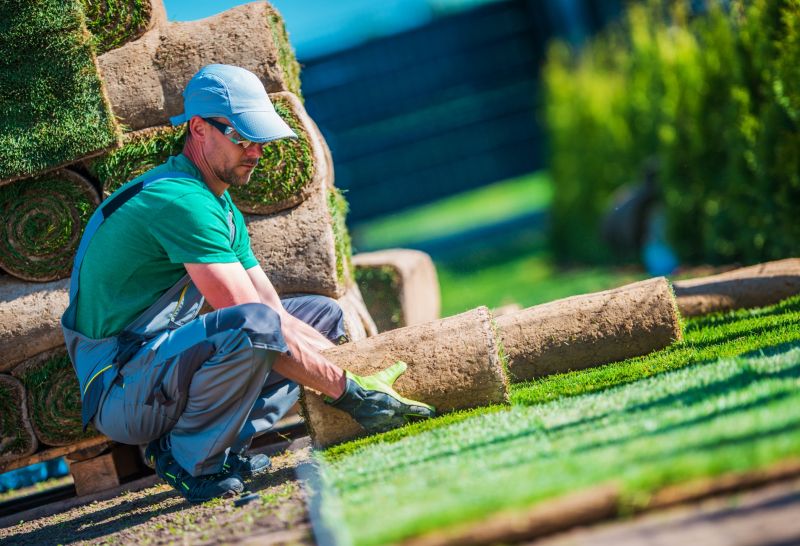Ultimate Product Guide for Artificial Grass Installation Supplies
Learn about the must-have products that ensure a secure, attractive, and durable artificial grass installation.
 Installing artificial grass can transform outdoor spaces by providing a low-maintenance, visually appealing surface suitable for various applications such as lawns, sports fields, playgrounds, and commercial landscapes. The process typically involves preparing the underlying surface to ensure proper drainage and stability, followed by laying down the synthetic turf and securing it with appropriate adhesives, nails, or staples. Choosing the right products for each stage of installation is crucial to achieving a durable and safe finished area. From base materials to infill options, there are numerous components designed to optimize performance and longevity.
Installing artificial grass can transform outdoor spaces by providing a low-maintenance, visually appealing surface suitable for various applications such as lawns, sports fields, playgrounds, and commercial landscapes. The process typically involves preparing the underlying surface to ensure proper drainage and stability, followed by laying down the synthetic turf and securing it with appropriate adhesives, nails, or staples. Choosing the right products for each stage of installation is crucial to achieving a durable and safe finished area. From base materials to infill options, there are numerous components designed to optimize performance and longevity.
Top Overall Option
Artificial Grass Installation Kit
A comprehensive installation kit typically includes a variety of essential components such as base materials, turf, seam tape, adhesives, infill, and securing tools. These kits are designed to provide everything needed for a complete artificial grass installation, making them suitable for DIY projects or professional use. They often come with detailed instructions to help ensure a smooth and efficient process, resulting in a durable and visually appealing finished surface.
Types of Products For Artificial Grass Installations
Crushed Stone Base
Provides a stable, well-draining foundation for artificial turf, available in various sizes for optimal compaction.
Decomposed Granite
A fine, compactable material that offers excellent drainage and a firm surface for turf installation.
Gravel Aggregate
Used as a base layer, gravel helps with drainage and stability for outdoor turf areas.
Artificial Turf Rolls
Pre-cut or roll-length synthetic grass sections that are unrolled and secured on prepared surfaces.
Seam Tape
Specialized tape used to join sections of turf seamlessly, ensuring a uniform appearance.
Adhesive/Glue
Industrial-grade adhesives designed for securing turf edges and seams reliably.
Infill Sand
Silica sand or similar infill materials that support turf blades and improve stability.
Rubber Granules
Infill option providing cushioning and impact absorption, often used in sports applications.
Landscape Staples
Heavy-duty staples or nails used to secure turf edges and seams to the ground.
Underlay Padding
Padding materials placed beneath turf to enhance comfort and reduce noise.
Edge Restraints
Materials used to anchor the turf perimeter and prevent edges from lifting or shifting.
Drainage Mats
Perforated mats that facilitate water flow beneath artificial turf to prevent pooling.
Cleaning Equipment
Tools such as leaf blowers, brushes, and vacuums designed to maintain artificial turf surfaces.
Popular Choices
Widely used for lawns, sports fields, and playgrounds, available in various pile heights and textures.
Commonly chosen for seamless installation, ensuring durability and a natural look.
Popular for supporting turf blades and maintaining shape under high traffic.
Frequently used for securing edges and seams, especially in high-wind areas.
Chosen for efficient water runoff and preventing pooling in outdoor installations.
Commonly selected as a foundation for stability and drainage.
Popular for adding comfort and reducing noise in residential lawns.
Regular maintenance often involves brushes and leaf blowers to keep turf looking fresh.
Frequently used to secure turf perimeter and prevent lifting or shifting.
Popular for ensuring strong seams and long-lasting installations.
One of the fundamental aspects of artificial grass installation is selecting the appropriate base layer. This layer provides stability and facilitates drainage, preventing water pooling and ensuring the turf remains in good condition over time. Common base materials include crushed stone, decomposed granite, or gravel, which can be compacted to create a solid foundation. Once the base is prepared, the synthetic turf can be unrolled and cut to fit the designated area, then secured along the edges and seams.
Infill materials are another essential component, often consisting of silica sand or rubber granules. These infills help support the blades of the artificial grass, improve cushioning, and enhance stability. Proper application of infill ensures the turf maintains its shape and resilience under foot traffic or outdoor elements. Additionally, adhesives and seam tapes are used to join sections of turf seamlessly, creating a uniform surface that looks natural and performs well.
Throughout the installation process, attention to detail and the use of high-quality products can significantly impact the overall result. Selecting durable adhesives, appropriate infill, and reliable securing methods can extend the lifespan of the artificial grass and reduce maintenance needs. Understanding the different types of products available and their specific functions helps installers and DIY enthusiasts achieve professional-looking results that meet their specific needs and preferences.
Key Buying Considerations
- Type of base material and its drainage capabilities
- Quality and pile height of the artificial turf
- Compatibility of infill materials with intended use
- Ease of installation and available tools or kits
- Durability and resistance to wear and weather conditions
- Seam and edge securing options for a seamless look
- Availability of proper drainage solutions
- Maintenance requirements and ease of cleaning
- Safety features such as non-slip surfaces and cushioning
- Compatibility with existing landscaping or structures
- Cost of materials and overall project budget
- Environmental conditions that may affect turf performance
- Warranty or guarantees offered by product suppliers
- Size and customization options for specific areas
- Installation time frame and complexity
This content contains affiliate links, and we may earn a commission if you make a purchase through these links. This does not influence our recommendations or opinions.
